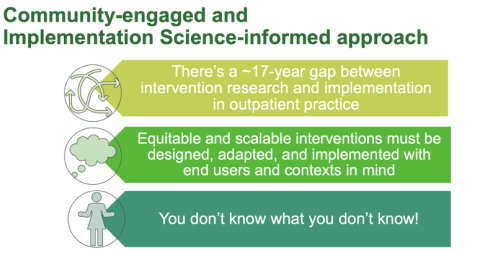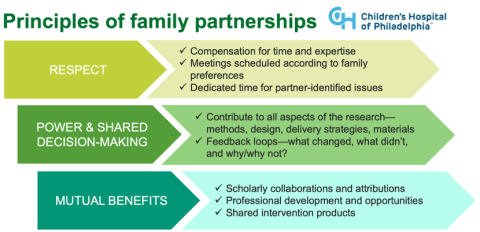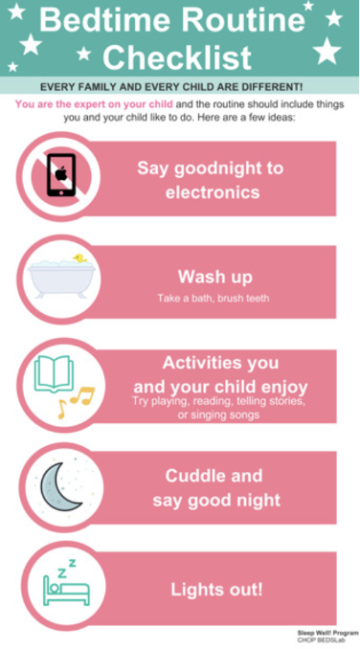
Editor's note: This article was produced by a student participating in the course J477/577: Strategic Science Communication, a collaboration between the School of Journalism and Communication’s Science Communication Minor program and the Research Communications unit in the Office of the Vice President for Research and Innovation.
When a child bursts into a tantrum, it appears as if the child is struggling with in the moment emotional regulation. While this may be true in some cases, research continues to show the value of sleep for overall emotional regulation at all ages. The University of Oregon’s Ballmer Institute for Children’s Behavioral Health focuses on children’s behavioral health—and sleep as an important part of the health and behavior equation. Personalized and community-engaged research can help tailor sleep interventions to be more acceptable and effective for families, ultimately aiding overall child wellbeing.
Ariel Williamson, an assistant professor at the Ballmer Institute and in the Department of Psychology has invested her efforts into understanding and addressing disparities in child sleep health. Recently elected by the Sleep Research Society as the recipient of the 2024 Rising Star Award in the Clinician Investigator category, Williamson has already made a significant impact in the field of pediatric sleep.
Sleep is a health behavior
Since joining the Ballmer Institute in September 2023, Williamson has continued to examine how sleep interventions can improve child sleep problems, with the ultimate goal of improving their overall health and well-being. Sleep is the backbone of health and wellbeing because it allows the body and brain time to recalibrate and store information from the day, consolidate memories, regulate digestion and growth, and fight off potential infections. By helping improve child sleep, Williamson is working in partnership with families to “promote positive child development—physically, socially, emotionally, and academically,” she said.

In an ever-evolving, fast-paced society, it is no wonder why sleep is put on the backburner for so many. Although many individuals look to parents to ensure their children achieve sleep wellness, Williamson believes that pointing fingers and blaming parents is counterproductive, preventing care providers and families from working together. Health disparities are often the result of larger systemic and societal issues including access and affordability of healthcare and childcare in metropolitan areas such as Portland.
Williamson said that one of the many reasons she enjoys doing sleep research and intervention is because she noticed it is “a high priority for families and modifiable, which can impact child behavior and health.”
Not only does sleep intervention allow Williamson to help families navigate a common childhood problem, but sleep is a habit that can be improved over time with intentional intervention. While there are many paths to improving sleep, she notes that “having care available where people already are seeking treatment, such as in primary care” can help create the most effective and sustainable change with children. As with any problem, making changes to child sleep takes conscious dedication and time.

However, according to the data Williamson collected in her previous research lab working with the Children’s Hospital of Philadelphia (CHOP) and the University of Pennsylvania, child sleep problems are linked to worse daytime functioning. In collaboration with her team members and family partners, she followed principles of family partnerships to develop Sleep Well! an intervention for young children with sleep problems.
Intervention based on family challenges and strengths
While for some it may seem intuitive that better sleep equates to a better health status and cognitive condition, more than one-third of American adults sleep fewer than seven hours a night, falling below the recommended guidelines, according to a report published by the National Center for Chronic Disease Prevention and Health Promotion. The CDC has also found that many children do not receive the sleep they need resulting in a heightened risk of a range of health conditions and disorders. While sleep is one of many contributors to overall health, Williamson denotes that it is an important piece of the puzzle. Socio-ecological and community-engaged approaches can help tailor sleep resources to meet families’ needs.

“The crux of my research is to partner with families and be collaborators in care,” Williamson said. “To join with families to develop interventions.”
As a researcher, Williamson seeks a balance between flexibility and maintaining research-based intervention to allow families to receive tailored care backed by research.
Providing resources and professional support is Williamson’s area of expertise. Sitting on the board of Beds for Kids, an organization working to provide beds and bedding for youth throughout metro Philadelphia and holding an expert position with the Pediatric Sleep Council, Williamson knows the value of holistic professional involvement in making changes in the community.
“Clinician training is crucial for implementing interventions in collaboration with families … what do clinicians need?” Williamson said.
Working to develop training to support clinicians treating children with sleep problems is one step Williamson is taking in her research to help increase the availability of flexible and tailored sleep interventions for children and families.
For example, a tangible takeaway of Williamson’s Sleep Well! intervention are infographics highlighting healthy sleep habits that were created in collaboration with families. The infographics and intervention strategies are meant to be tailored to the needs of the family. By emphasizing that the family is the expert on their child, Williamson hopes to work with families to treat sleep problems and promote health restoration for the community at large.
Image descriptions:
Image 1: The community-engaged and implementation science-informed approach is based on three main mindsets. First, there is an approximate 17-year gap between intervention research and implementation in outpatient practice. Second, equitable and scalable interventions must be designed, adapted, and implemented with end users and contexts in mind. Third, you don't know what you don't know!
Image 2: The Principles of Family Partnership include respect, power and shared decision making, and mutual benefits. Respect can be demonstrated through compensation for time and expertise, meetings scheduled according to family preferences, and dedicated time for partner-identified issues. Power and shared decision-making include shared contribution to all aspects of the research methods design, delivery strategies, and materials; and feedback loops that include what changed, what didn't, and why/why not. Mutal benefits can be demonstrated through scholarly collaborations and attributions; professional development and opportunities; and shared intervention products.
Image 3: The bedtime routine checklist states that every family and every child are different. You are the the expert on your child and the routine should include things you and your child like to do. Here are a few ideas: First, say goodnight to electronics. Second, wash up. Take a bath, brush teeth. Third, activities you and your child enjoy. Try playing, reading, telling stories, or singing songs. Fourth, cuddle and say good night. Fifth, lights out!
